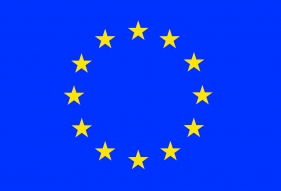Europe's Gas Diversification Comes at a High Price: Analysis
Diversification is a key dimension of the current EU Energy Union policy, but diversification means different things: it can mean switching to other suppliers to take less – in this case – Russian gas, as well as limiting Russia’s dominant position in the market through the availability of alternative supplies if needed.
For example in 2016, 42% of Europe’s natural gas imports – more than ever – came from Russia[1], which offers a stable supply through its mostly USSR-built pipeline network. But that was also the first year ever that Ukraine bought no gas contractually from Gazprom; the year in which US exports began from Sabine Pass; and the EU had more LNG import capacity than ever.
This topic was explored May 3 by a panel of experts titled “Géopolitique du gaz dans l'Europe du Sud” hosted by French and Spanish think-tanks Institut Français des Relations Internationales (IFRI) and Orkestra.
Apart from domestic production and Russian supply, gas can also reach Europe through LNG terminals, pipelines from Algeria, and initially in small volumes from the Southern Gas Corridor project running from Azerbaijan to Europe. However, these routes have in fact amount to a small supply share, which limits the diversification objectives of the European Energy Union.
At present, there are 25 LNG terminals in the EU[2], operating at roughly a quarter of their capacity, says Marie-Claire Aoun, director of IFRI. The predicted LNG global oversupply has yet to happen, therefore prices are not competitive enough compared with Asia, where high demand keeps many LNG deliveries away from Europe.
Gonzalo Escribano from Spanish think-tank Real Instituto Elcano said that Algeria is another traditional supplier – currently covering around a tenth of European consumption [3] -- but it needs huge investments in infrastructure along with institutional reforms in order to expand its output and export capacity.

Finally, the Southern Gas Corridor is an ongoing project set to become operational in late 2018. Still, it would only cover 2% of current European demand, said Nicolo Sartori from Italian think-tank Istituto Affari Internazionali (IAI). Even with big ambitious plans, these options at best can only hope to match a portion of Russia’s share of the gas market in the EU if consumption follows current trends.
How then, does the European Commission expect to follow its own policy of diversification? Christopher Jones, Deputy Director General for Energy, offered a more nuanced take on this objective. Gas is still key in the long-term until 2050 and imports will still be necessary, he says. Diversification could mean setting a cap on imports by country, although it could simply mean a market where no single player has power.
The latter would require ‘liquid’ global markets, where each and every EU country could in theory, reach out to different suppliers. This means that Russia would keep a large share of the market, but not a monopoly position. Perhaps then, the real objective of the EU relies on the increase of the global LNG market.
[1]https://ec.europa.eu/energy/sites/ener/files/documents/quarterly_report_on_european_gas_markets_q4_2015-q1_2016.pdf
[2]http://www.gie.eu/index.php/maps-data/lng-map (downloaded excel file, counted « operational » terminals in EU countries)



